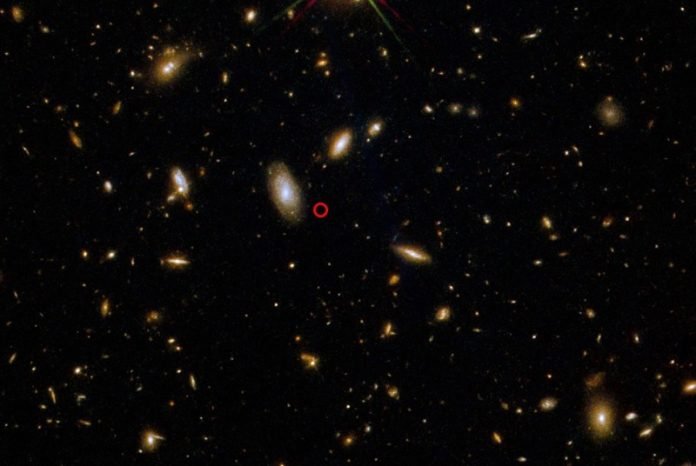
Last year, scientists discovered a huge burst of light in space that lasted for 50 seconds.
They named it GRB211211A and thought it was caused by a massive star collapsing.
But new research from Northwestern University tells a different story:
This bright light came from the collision of a neutron star and a black hole. This discovery changes what we know about these bursts of light, called gamma-ray bursts (GRBs).
GRBs are like cosmic fireworks—short but incredibly bright flashes of light we can detect from Earth.
Usually, these bursts come from massive stars that explode, but this new research shows that sometimes, when a neutron star and a black hole crash into each other, they can create a GRB too.
So why is this burst of light so huge?
Researchers Ore Gottlieb and Danat Issa explained that it’s all about the spinning disk of gas around the black hole and its magnetic field.
Think of this disk like a whirlpool that’s swirling around and getting sucked into the black hole.
If this disk is really big and its magnetic field is strong, the black hole can shoot out a jet of material that is super bright but lasts for a short time.
On the other hand, if the magnetic field around this disk is weak, the jet is less bright but lasts longer. The weak magnetic field makes the jet stick around, and it matches the brightness and duration of the mysterious GRB211211A.
This new discovery isn’t just about solving a cosmic mystery. It also helps us understand more about black holes, their magnetic fields, and these spinning disks of gas.
To figure all this out, the scientists ran complex computer simulations. They had to simulate the time before the collision and the time after it, then link these two simulations together. It’s like putting together two pieces of a puzzle to see the full picture.
This was a huge challenge because these events happen so fast and involve so many complicated physics.
Now, the team wants to make their model even better by including the role of neutrinos, tiny particles that could influence the whole process.
This will help give an even more accurate picture of what’s going on during these powerful cosmic events.
In short, this research not only helps us understand why some gamma-ray bursts are extra bright, but it also sheds light on the inner workings of some of the most mysterious objects in the universe—black holes and neutron stars.
Follow us on Twitter for more articles about this topic.
Source: Northwestern University.



